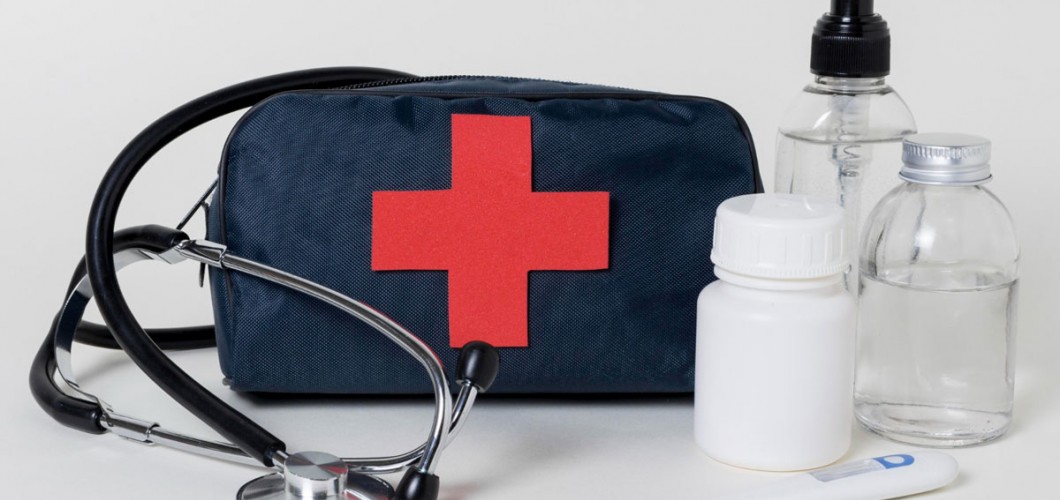
How to Prepare a First Aid Kit?
Emergencies can happen at any time. Accidents, illnesses, minor injuries, or natural disasters are events where quick and correct intervention can make all the difference. Having a well-prepared first aid kit is essential for these situations. A first aid kit contains a range of medical supplies that can be lifesaving when needed. However, knowing how to prepare the kit properly will ensure you're ready for any emergency.
In this post, we will explore step-by-step how to prepare an effective first aid kit.
1. What is a First Aid Kit and Why is It Important?
A first aid kit is a collection of tools and supplies that allow you to provide basic medical intervention in case of an emergency. It’s particularly important for accidents or sudden health issues where professional help has not yet arrived. A well-equipped first aid kit can save lives by helping you manage the situation until help arrives.
A first aid kit can vary depending on personal needs and the environment where you live. You should consider the types of health problems you are most likely to face based on your lifestyle and surroundings when preparing your kit.
2. Essential Items to Include in a First Aid Kit
A well-prepared first aid kit ensures that you're ready for a wide range of emergencies. Here are the essential items that should be in your kit:
1. Pain Relievers and Medications
You should have pain relievers and medications for common ailments such as headaches, muscle pain, colds, and other minor illnesses.
- Pain relievers: Paracetamol, ibuprofen, etc.
- Antihistamines: For allergic reactions.
- Aspirin: For pain and inflammation relief.
2. Supplies for Wound Care
To treat wounds quickly and effectively, include bandages, gauze, antiseptic solutions, and other dressing materials.
- Band-aids: For small cuts and abrasions.
- Gauze and bandages: To control bleeding.
- Antiseptic solutions and creams: To prevent infection.
- Sterile dressings: For larger wounds.
3. Cooling and Heating Applications for Injuries
For bruises, sprains, or scrapes, cooling and heating applications can help relieve pain and swelling.
- Cooling gel or ice pack: For sprains, swelling, and injuries.
- Heating pad or hot water bottle: For muscle pain or cramps.
4. Emergency Equipment
Your first aid kit should also include life-saving equipment for critical emergencies.
- Blood pressure cuff and thermometer: To measure body temperature and blood pressure.
- Mouth-to-mouth resuscitation mask: Used for CPR and artificial respiration.
- First aid manual: A guide for basic first aid techniques.
5. Other Necessary Items
Besides the core medical supplies, there are additional items that will make your first aid kit more practical.
- Tweezers and scissors: For removing splinters or foreign objects.
- Hand sanitizer: For hygiene.
- Elastic bands: To control bleeding.
- CPR face shield: For performing CPR in emergencies.
3. Regularly Check and Update Your First Aid Kit
Over time, the contents of your first aid kit can expire or get damaged. It is essential to regularly check and update your kit to ensure that all items are in working condition. At least every six months, review the contents of your first aid kit and replace expired or damaged items.
Additionally, it’s important that those who might need to use the kit are familiar with the materials inside and how to use them. Having basic first aid knowledge is vital for effective intervention in emergencies.
4. Where Should You Keep Your First Aid Kit?
Your first aid kit should be accessible in different locations—at home, at work, and in your car. At home, store your kit in a place that is easy to reach, such as the bedroom, kitchen, or bathroom. In your car, make sure the kit is securely placed so you can access it quickly in an emergency.
Moreover, always carry your first aid kit with you during outdoor activities, vacations, or when participating in sports. Ensure that the kit is portable and suitable for any activity you’re engaging in.
5. Conclusion: Being Prepared is Always the Best Option
Having a well-prepared first aid kit can save lives in emergencies. To ensure you can provide quick and effective intervention when needed, make sure your kit includes the right supplies. In any emergency, having the correct knowledge and equipment can increase the chances of survival. Regularly check your kit and keep it stocked with current, essential items. Remember, being prepared for emergencies is always the best option!

Leave a Comment